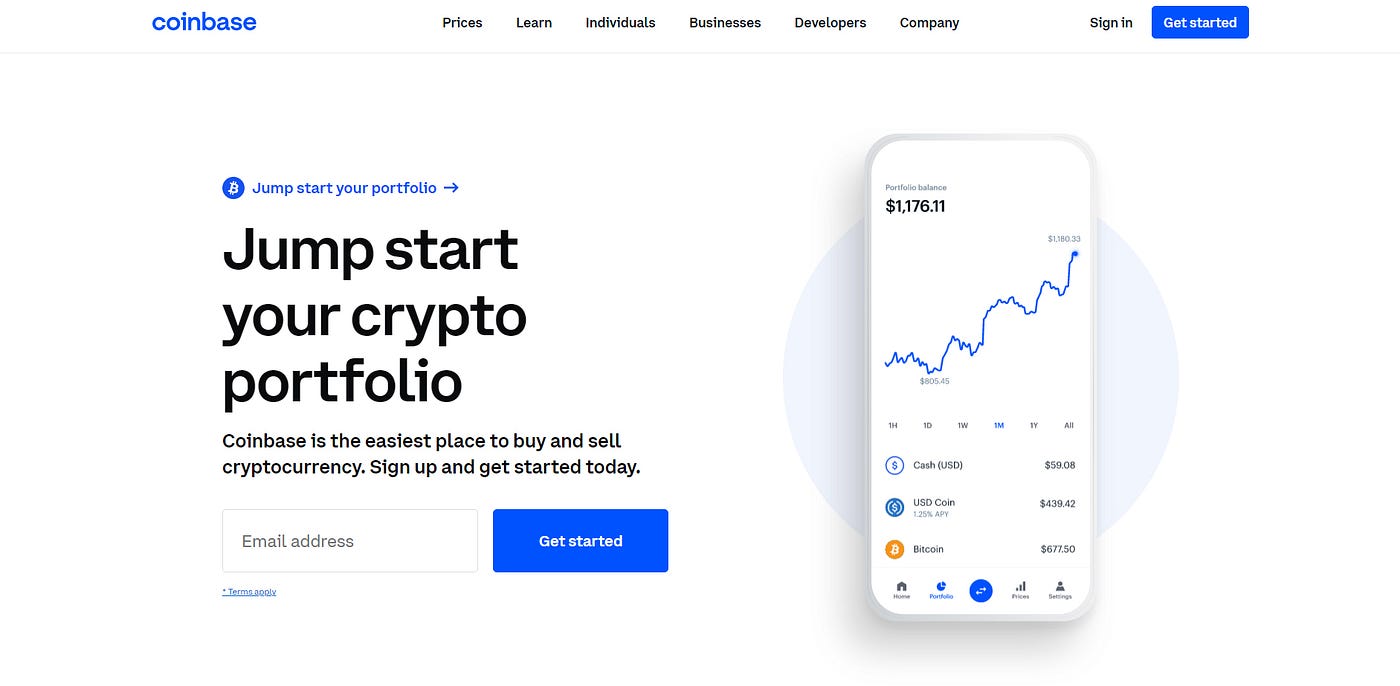Cryptocurrency has taken the financial world by storm, and Coinbase has emerged as one of the most popular and user-friendly platforms for buying, selling, and storing digital assets like Bitcoin. If you’re ready to dive into the exciting world of crypto but don’t know where to start, this step-by-step guide will walk you through the process of opening a Coinbase account and making your first Bitcoin purchase.
What is Coinbase and Why Use It?
Coinbase is a leading cryptocurrency exchange that allows users to buy, sell, and store various digital currencies. Here are some key reasons why Coinbase is a popular choice for crypto enthusiasts:
- Beginner-Friendly Interface: Coinbase offers a straightforward and intuitive platform, making it easy for new users to navigate the world of cryptocurrency.
- Wide Selection of Cryptocurrencies: In addition to Bitcoin, Coinbase supports a diverse range of popular digital assets, including Ethereum, Litecoin, and more.
- Multiple Payment Options: Users can purchase cryptocurrency using various methods, such as debit cards, bank transfers, and wire transfers (depending on location).
- Secure Storage: Coinbase provides secure storage options for your digital assets, giving you peace of mind knowing your funds are protected.
- Educational Resources: Through its “Learn & Earn” program, Coinbase offers users the opportunity to learn about different cryptocurrencies and earn rewards in the process.

Step 1: Sign Up for a Coinbase Account
To get started, head over to the Coinbase website and click on the “Sign Up” button. You’ll need to provide your email address and create a strong password. Coinbase will send a verification email to the address you provided. Click on the link in the email to verify your account.
Step 2: Provide Personal Information
Once your email is verified, you’ll need to provide some personal information to complete your account setup. This includes your full name, date of birth, and phone number. Coinbase requires this information to comply with Know Your Customer (KYC) and Anti-Money Laundering (AML) regulations.
Step 3: Verify Your Identity
To further comply with regulations and ensure the security of your account, Coinbase requires users to verify their identity. You’ll need to upload a valid government-issued photo ID, such as a driver’s license or passport. Coinbase uses secure encryption to protect your personal information.
Step 4: Add a Payment Method
Now that your account is set up and verified, it’s time to add a payment method so you can start buying cryptocurrency. Coinbase offers several options:
- Bank Account: You can link your bank account to Coinbase for ACH transfers. This is typically the most cost-effective option, but it may take a few days for funds to clear.
- Debit Card: Linking a debit card allows you to make instant purchases, but be aware that this method usually comes with higher fees compared to bank transfers.
- Wire Transfer: For larger transactions, wire transfers offer a faster option, but they may incur additional fees from your bank.
Remember that available payment methods and fees can vary depending on your location. Coinbase provides a clear breakdown of fees and supported options on their website.
Step 5: Buy Your First Bitcoin
With your account verified and funded, you’re ready to make your first Bitcoin purchase. Here’s how:
- Navigate to the “Buy/Sell” tab on the Coinbase dashboard.
- Select “Bitcoin” from the list of available cryptocurrencies.
- Enter the amount of Bitcoin you want to purchase in either your local currency or Bitcoin.
- Choose your payment method (bank account, debit card, or wire transfer).
- Review the transaction details, including the fees, and confirm your purchase.
Congratulations! You’re now the proud owner of some Bitcoin. You can view your Bitcoin balance in your Coinbase wallet.
Storing Your Bitcoin: Coinbase Wallet vs. Hardware Wallets
While Coinbase provides a user-friendly wallet for storing your Bitcoin, it’s important to understand your storage options. Coinbase offers two main storage solutions:
- Coinbase Wallet: This is the default wallet that comes with your Coinbase account. It’s convenient and easy to use, making it a good choice for beginners. However, it’s important to note that Coinbase controls the private keys to this wallet.
- Hardware Wallets: For users who prioritize security and want full control over their private keys, hardware wallets like Ledger or Trezor are recommended. These physical devices store your Bitcoin offline, providing an extra layer of protection against hacks and unauthorized access.
Keeping Your Coinbase Account Secure
Security should be a top priority when dealing with cryptocurrencies. Here are some best practices to keep your Coinbase account and Bitcoin holdings safe:
- Enable Two-Factor Authentication (2FA): Coinbase offers various 2FA options, such as SMS or Google Authenticator. Enabling 2FA adds an extra layer of security to your account, requiring a second form of verification when logging in or making transactions.
- Use a Strong, Unique Password: Choose a strong password that you haven’t used for any other online accounts. Consider using a password manager to generate and store complex passwords securely.
- Be Aware of Phishing Scams: Be cautious of suspicious emails, messages, or websites claiming to be from Coinbase. Always double-check the URL and never share your login credentials or personal information with anyone.
- Regularly Monitor Your Account Activity: Keep an eye out for any unauthorized transactions or suspicious activity on your Coinbase account. If you notice anything unusual, contact Coinbase support immediately.
Learning More About Bitcoin and Cryptocurrencies
As a new Bitcoin owner, you may want to learn more about the fascinating world of cryptocurrencies. Coinbase offers a variety of educational resources to help you expand your knowledge:
- Coinbase Learn: This platform provides beginner-friendly articles, videos, and tutorials covering various aspects of cryptocurrencies, blockchain technology, and more.
- Coinbase Earn: Earn free cryptocurrencies by completing educational modules and quizzes. It’s a great way to learn about different digital assets while adding to your crypto portfolio.
Conclusion
Opening a Coinbase account is a simple and straightforward process that allows you to start your journey into the world of Bitcoin and cryptocurrencies. By following the steps outlined in this guide and implementing the recommended security best practices, you can safely buy, store, and manage your Bitcoin holdings on Coinbase.
Remember, investing in cryptocurrencies comes with risks, and it’s essential to conduct thorough research and understand the market before making any significant investments. As you continue to learn and explore the exciting world of Bitcoin, always prioritize security and stay informed about the latest developments in the cryptocurrency space.
Happy Bitcoin investing, and welcome to the future of finance!
















Add Comment